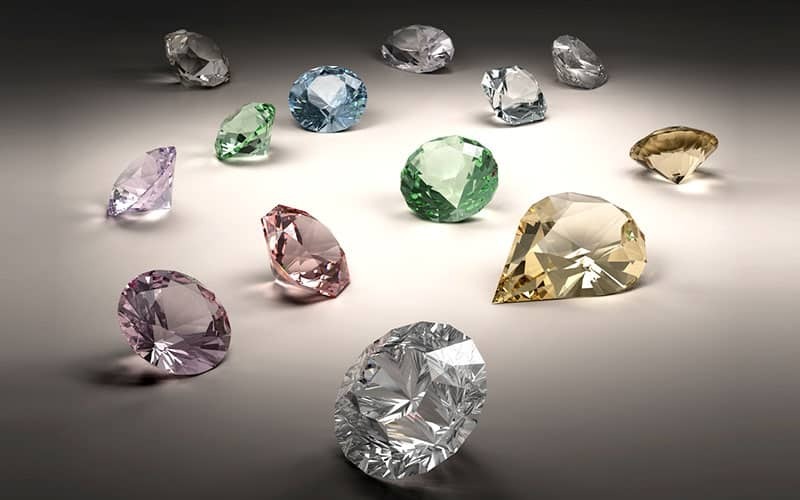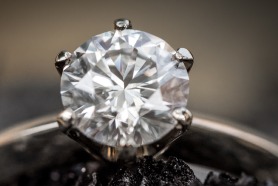
The Enduring Sparkle by Exploring the World of Diamond Recycling
Diamonds, celebrated for their unparalleled brilliance and durability, have long symbolized love, commitment, and luxury. However, the traditional methods of diamond acquisition, primarily through mining, have faced growing scrutiny regarding their environmental footprint and ethical implications. In response, a significant shift is occurring within the diamond industry: the rise of diamond recycling. This practice not only offers a sustainable alternative to newly mined stones but also taps into a vast, existing reservoir of these precious gems, giving them a second, or even third, chance to shine.
This article delves into the intricate world of diamond recycling 鑽石回收, exploring its numerous benefits, the types of diamonds that can be repurposed, the processes involved, and the exciting future that lies ahead for this burgeoning sector.
The Environmental and Economic Imperative: Why Recycle Diamonds?
The motivation behind diamond recycling is multifaceted, driven by both environmental responsibility and economic pragmatism.
Environmental Benefits: Traditional diamond mining is an energy-intensive process with considerable ecological consequences. For every carat of diamond mined, vast quantities of earth are disturbed, leading to:
- Habitat Destruction: Large areas of land are cleared, impacting local ecosystems and displacing wildlife.
- Water Pollution: The use of heavy machinery and processing chemicals can contaminate water sources, affecting both aquatic life and human communities.
- Carbon Emissions: The operation of mining equipment and transportation contributes significantly to greenhouse gas emissions, exacerbating climate change.
- Waste Generation: Mining produces enormous amounts of mineral waste, scarring landscapes.
By contrast, recycled diamonds boast a near-zero environmental impact. They eliminate the need for new mining operations, thus reducing land disturbance, water consumption, and carbon emissions. This makes them a truly eco-friendly choice for consumers and businesses alike.
Economic Advantages: Beyond the environmental benefits, diamond recycling offers tangible economic advantages:
- Cost-Effectiveness: Sourcing recycled diamonds can be more cost-effective than newly mined ones, as it bypasses the extensive and expensive processes of mining and initial processing. These savings can be passed on to consumers, making diamonds more accessible.
- Value Retention: Unlike some luxury goods, diamonds retain their physical properties and intrinsic value over time. Recycled diamonds are not of lower quality; they are simply re-entered into the market, often at a more competitive price point due to their pre-owned status.
- Circular Economy: Recycling promotes a circular economy, where resources are kept in use for as long as possible, extracting maximum value from them, and then recovering and regenerating products and materials at the end of their service life. This reduces waste and minimizes reliance on virgin resources.
A Diamond’s Second Life: What Types of Diamonds Can Be Recycled?
Virtually any diamond, regardless of its origin or initial use, can be recycled. The primary categories include:
- Jewelry Diamonds (Post-Consumer): This is the most common source of recycled diamonds. These are diamonds extracted from pre-owned jewelry – engagement rings, necklaces, earrings, and other pieces – that are no longer desired or are being remade. This includes both modern and antique cuts. Antique diamonds, cut before 1930, often possess unique faceting patterns designed for candlelight, and can be recut for a more modern aesthetic if desired.
- Industrial Diamonds: Diamonds are not just for adornment; they are essential in various industrial applications due to their extreme hardness. They are used in cutting tools, abrasives, and drilling equipment. When these tools wear down, the industrial diamonds within them can be recovered and repurposed for new industrial uses or, if of sufficient quality, for jewelry.
- Unused or “Deadstock” Diamonds (Pre-Consumer): These are diamonds that were manufactured or cut but never made it into a finished piece of jewelry or an industrial product. They might be excess inventory, samples, or diamonds that didn’t meet specific design requirements. Recycling these diamonds prevents them from becoming waste and brings them into circulation.
- Lab-Grown Diamonds: While often touted as a more sustainable alternative to mined diamonds, lab-grown diamonds also consume energy in their creation. As the lab-grown market matures, the recycling of these diamonds, once they reach their end-of-life in a product, will also become a component of the circular diamond economy.
From Old to New: The Diamond Recycling Process
The process of recycling diamonds 鑽石回收 involves several meticulous steps to ensure the stones are suitable for resale or repurposing:
- Collection and Recovery: Diamonds are collected from various sources, primarily pre-owned jewelry. This often involves carefully dismantling existing settings to liberate the stones.
- Cleaning and Assessment: Once recovered, the diamonds undergo thorough cleaning, often involving specialized acid solutions, to remove any dirt, grime, or residue from their previous settings. They are then meticulously assessed for their “4 Cs” – carat weight, color, clarity, and cut – as well as any chips, abrasions, or damage. Advanced technology, such as De Beers’ SynthDetect machine, is used to differentiate natural diamonds from synthetic simulants.
- Re-cutting and Re-polishing (Optional but Frequent): Many recycled diamonds, especially older cuts or those with minor damage, undergo re-cutting and re-polishing. This process enhances their brilliance, improves their symmetry, or modifies their shape to align with current market trends. While re-cutting might slightly reduce the carat weight, it significantly boosts the diamond’s overall appeal and value.
- Certification and Grading: Like newly mined diamonds, recycled diamonds can be sent to independent gemological laboratories (such as GIA or IGI) for re-certification. This provides buyers with objective assurance of the diamond’s quality and characteristics, instilling confidence in their purchase.
- Re-entry into the Market: Certified recycled diamonds are then offered to jewelers, designers, and consumers, ready to begin their new life in a fresh setting or application.
Key Players and the Future of Diamond Recycling
The diamond recycling industry is rapidly expanding, with dedicated companies and initiatives driving its growth. Companies like White Pine Diamonds specialize in sourcing, processing, and supplying recycled diamonds to businesses worldwide, particularly focusing on B2B transactions and melee diamonds (small diamonds). Major jewelry retailers and designers are also increasingly incorporating recycled diamonds into their collections, recognizing consumer demand for ethical and sustainable options. Brands like Brilliant Earth have robust recycling programs, allowing customers to trade in old jewelry for credit towards new purchases.
The future of diamond recycling 鑽石回收 is bright. As consumers become more environmentally conscious and seek transparent and ethical supply chains, the demand for recycled diamonds is expected to continue its upward trajectory. Technological advancements in diamond assessment and re-cutting will further streamline the recycling process, making it even more efficient and cost-effective. Furthermore, the increasing integration of blockchain technology is set to enhance traceability and transparency within the recycled diamond market, allowing consumers to verify the origin and journey of their gems with greater certainty.
In essence, diamond recycling 鑽石回收 represents a harmonious blend of tradition and innovation. It respects the enduring beauty and value of these timeless gems while embracing modern principles of sustainability and circularity. By choosing recycled diamonds, consumers can adorn themselves with a piece of history that not only sparkles brilliantly but also carries the profound story of responsible stewardship for our planet. The concept of “forever” for a diamond is truly evolving, extending beyond a single ownership to encompass an ongoing, sustainable legacy.


